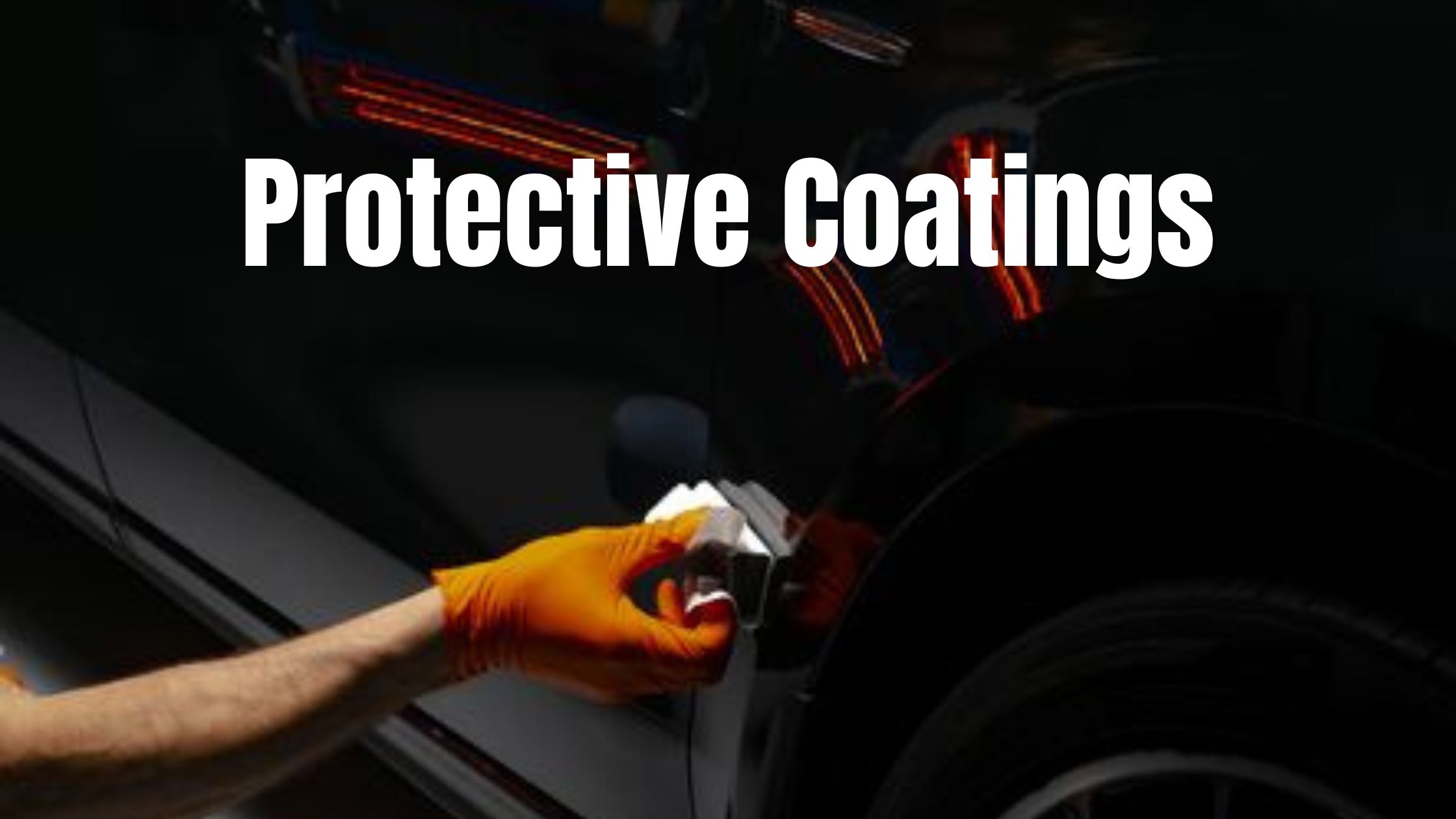
In the world of protective products, there are several different types. Many detailers will be familiar with wax, some also with sealants but not many will have heard of a coating. These coatings are special products that offer extreme durability and protection, but with a cost; much less easy to apply. The technology behind these products is also very different to sealants or wax. There are coatings for paintwork, glass, rubber and plastic. These product are also referred to as SiO2 coatings or as Ceramic coatings.
Contents
1 The main advantage
2 The main disadvantages
3 SiO2, Silicum dioxide, silica and ceramic
4 Spraying a coating
5 The need for any other product
5.0.1 Different related articles
The main advantage:
Although coatings have there downsides, they are becoming very popular for a very good reason. Some of these reasons are:
- They offer very good durability
- They offer very good chemical resistance
- The finished look has improved a lot the last few years
- They offer a good selling margin
- They give people a very professional impression
- They can easily be layered for better performance
- Finished result would become a lot better with infrared heat
- Excellent beading if surface has been prepared correctly
- Excellent sheeting if surface has been prepared correctly
- Very good scratch resistance due to the hardness
The main disadvantages
These specialist products are very popular, but they have certain drawbacks that should make you think about the product that suits you the best.
- They do not fill in swirls or hide any defects
- They often require intensive buffing
- A mistake is very labor-intensive to correct
- Experience is needed to apply them correctly
- The surface needs to be prepared very carefully
- They might not offer the warm glow somebody is looking for
- They need a minimum of 24 hours of dry weather
- Would be best applied when car is parked inside
- They are a bit more expensive
- It is becoming more and more difficult to filter the good from the bad products
- More care has to be taken with health-risks in mind, gloves and breathing filters are very recommended
- Very poor beading if surface is not prepared correctly
- Very poor sheeting if surface is not prepared correctly
SiO2, silicum dioxide, silica and ceramic
There are many terms used to describe coatings. Some call them SiO2 sealants, others prefer the term ceramic coating. Although there is a difference between the products, the real-life difference is to small to mention. These products are all based on a solvent with silica and silicum dioxide. When applied, the solvents evaporate while the active ingredients bond with the surface underneath. After a certain period you “buff” off the remaining product, very similar to buffing wax. The difference in ingredients in these products make them behave slightly different, but that would be like discussing the differences between 1 wax product and another wax product. One might buff off easier, or add a tiny bit more gloss. But in the end those difference are so small, that there is no point in trying to make different categories out of them.
Spraying a coating
There are different techniques to apply a coating. Most manufacturers recommend applying a coating by applying some drops on a micro suede cloth, and spreading it evenly on the surface in a crisscross pattern. However, detailers have been experimenting with applying the coating via an airbrush system. Basically applying the coating in a similar way as paint is being applied when spray painting. It is difficult to judge the result as these experiments are mostly shared on social media, where most detailers don’t post negatives in order to avoid bad replies. It seems there is a different opinion on whether the coating needs to buffed afterwards or not. Some have applied the coating and just left it to cure, seeing as the airbrush technique gives an even and smooth finish. Others feel the product still needs to be buffed, in the same way as the manufacturers often recommend. There is also a small group of users who feel the product still needs to be spread out after applying. The spray is used to spread it evenly, the microsuede is then used to “rub it in” and smear it over the surface. After initial hazing, the finish is buffed to a gloss. Manufacturers haven’t properly replied on this technique and none recommend it at the moment.
The need for any other product.
These ceramic coatings don’t need any other products. There is no logical reason to apply a wax on top of this product. Just to put it in perspective: Wax is great for: hiding swirls and very small surface defects Adding some gloss A quick application of protection for a short period of time So you can learn from that that a wax is best used in cases where you have small surface defects, need to add some gloss and need a quick way of applying very temporary protection. A ceramic coating needs a certain amount of preparation. So the surface needs to be polished properly before it is applied. This means that there are no swirls or surface defects left that a wax can hide. A ceramic coating also adds a very nice layer of hard gloss, so there is no reason to want the microscopic bit that wax could perhaps add. Lastly; a ceramic coating lasts easily for a year, the best wax needs to be replaced within 3 months. Wax is like a very temporary quick fix of protection and gloss. Ceramic coatings are a very long lasting source of dependable protection, performance and gloss. Using wax on top of a ceramic coating, would be like painting over your powder-coated fence with cheap paint that you made from water and coloring agents. There is a small difference with sealants. Sealants that are based upon acrylic polymer technology can actually bond with the ceramic coating, and can help to prevent waterspots from forming in the first few days. Manufacturers like Maxprotect actually recommend using their Silkcoat on top of their V1/V2/UNCR to help prevent waterspots.
Disclaimer : The content provided on this blog by Torquoholic is intended for informational purposes only. The views and opinions expressed herein are those of the individual authors and do not necessarily reflect the official policy or position of Torquoholic as a whole. Some content posted on this blog is created by Torquoholic's team, while other content is derived from various sources on the internet, books, discussions, and knowledge sharing by industry professionals. While we strive to ensure the accuracy and reliability of the information provided, we cannot guarantee its completeness or timeliness. The information presented on this blog is based on our personal research and understanding of the topic at hand. It should not be interpreted as a comprehensive education on the subject matter. Readers are encouraged to conduct their own research and consult with relevant professionals for specific advice or information. Torquoholic shall not be held liable for any errors, omissions, or inaccuracies in the content provided on this blog, nor for any actions taken in reliance thereon. We disclaim any responsibility for the content of external websites linked to from this blog. By accessing and using this blog, you agree to indemnify and hold Torquoholic and its authors harmless from any claims, damages, or losses arising from your use of the information provided herein. Thank you for your understanding and continued support.




